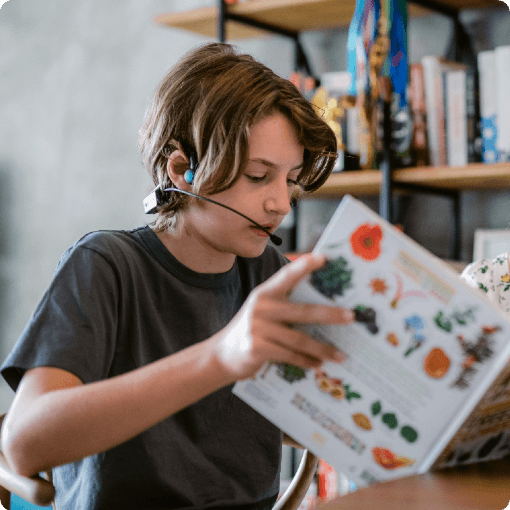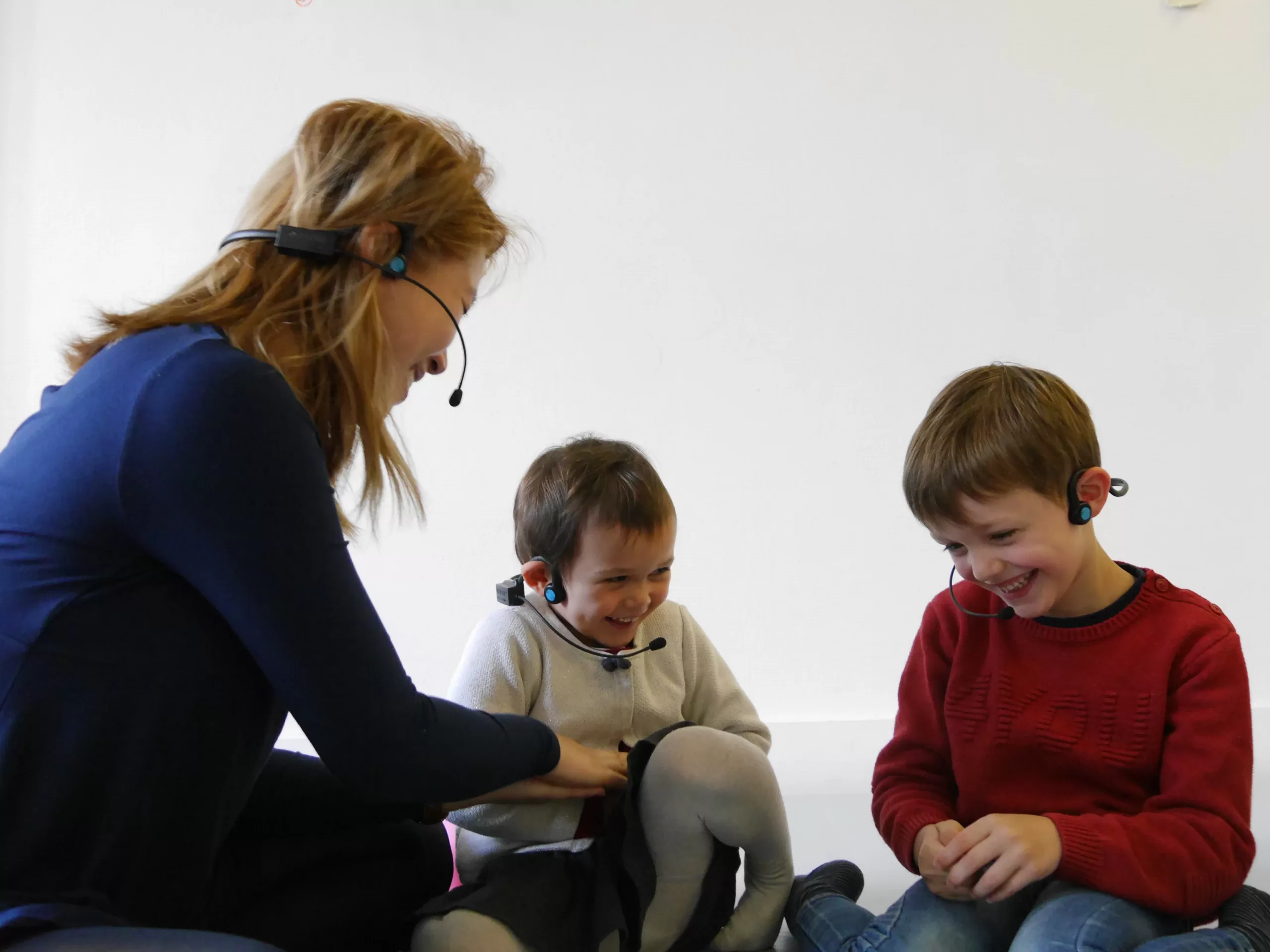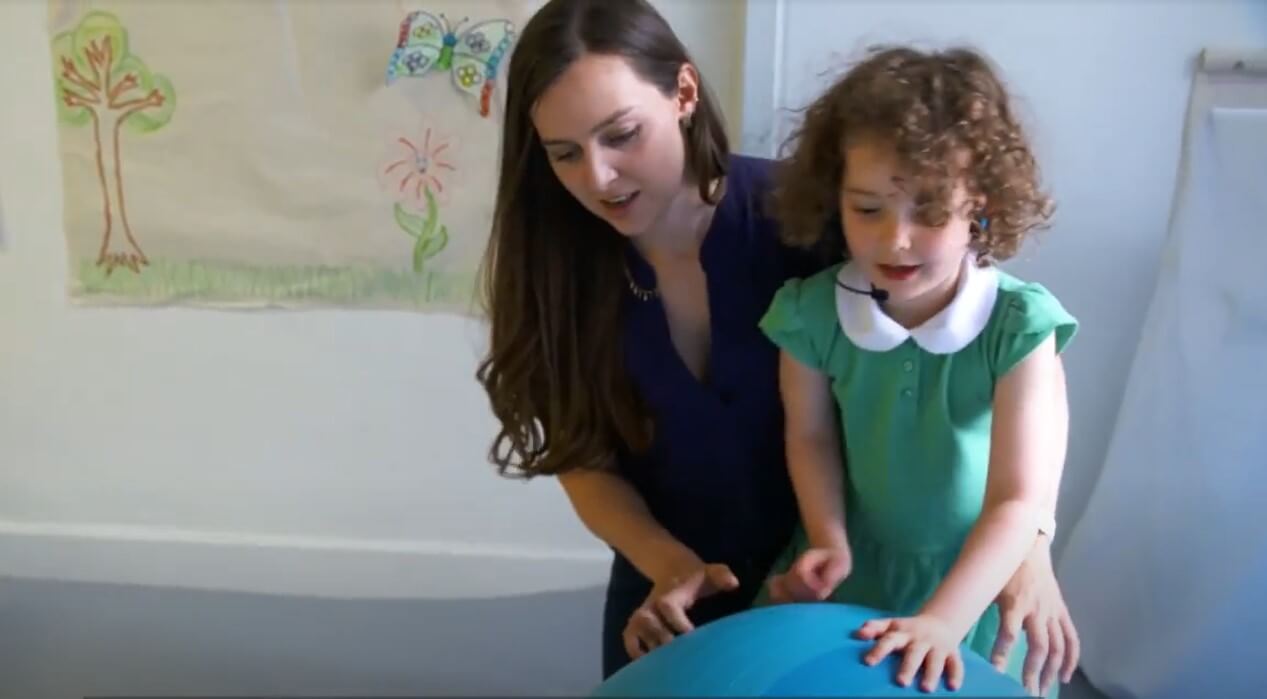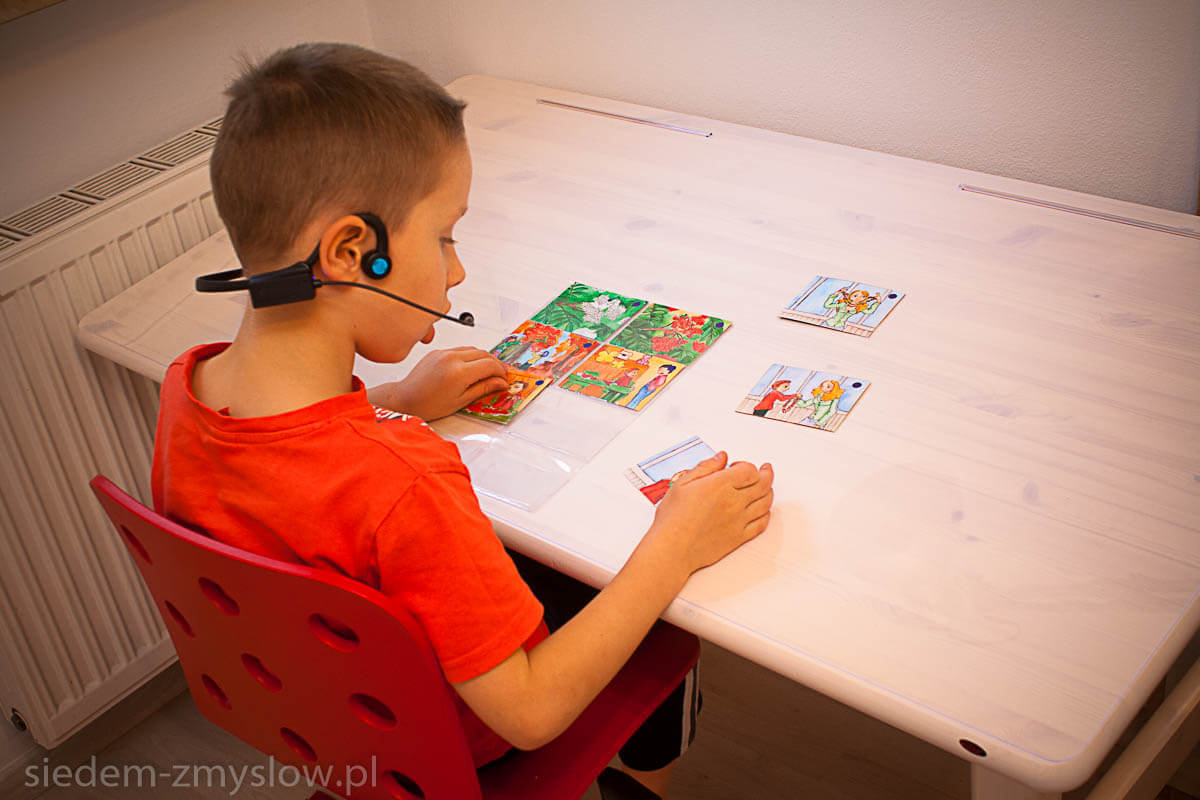Maximize learning potential
Forbrain® is brightening the lives of people with special education needs worldwide. Our non-invasive learning device perfectly complements therapy to boost program outcomes.

Brain training for a better life
Learning is critical to everyone’s development, but did you know hearing plays an essential role? It’s an important part of how we sense the world around us which impacts the ways we think, feel and act. People with special education needs may have a long road to reaching the same outcomes as others, yet the right tools and training can help them get there.
Forbrain applies years of auditory stimulation research to provide an easy-to-use learning device that boosts the brain. Our device leverages the natural auditory feedback loop to improve skills such as speech fluency and comprehension, attention, and memory. With Forbrain, people can grow the cognitive skills and self-confidence needed for a fulfilling life.



What are the benefits?
Clearer speech
Forbrain instantly helps the wearer tune into the various sounds critical in language construction. This improves voice quality and rhythm.
Increased attention
Forbrain keeps the brain alert which helps sustain attention and reduce distraction. These qualities aid clearer thinking and memory.
Stronger memory
Forbrain improves the activation of auditory pathways in the brain during speech, enabling better information retention.
Tackle learning challenges with Forbrain®
Forbrain is a safe, non-invasive device that’s easy to use during therapy to boost program outcomes and at home as a bridge between sessions. Our powerful technology immediately enhances self-awareness and vocalization which improves the wearer’s speech and motivates them to practice. Children also think the headphones are super cool and fun to use!
There are many ways to use Forbrain depending on the person’s unique needs and goals. Why not give activities like vocal play, reading, social games, and singing a go?

Such as speech-language delay, apraxia, speech and sound disorders, and language disorders. Forbrain improves self-awareness which makes speech easier to correct.
Learn more
Forbrain helps correct the processing of sensory and auditory information and improves listening skills.
Learn more
Such as ADD and ADHD. Forbrain can be used in activities where the child may have difficulty staying on task as the device creates a grounding effect that helps them stay present and focused.
Learn more
Forbrain aids recall of sight words, spelling, and vocabulary often leading to increased reading fluency.
Learn more
Forbrain helps enhancing focus, improving auditory processing, and boosting self-confidence—without adding extra time to your routine.
Learn more
Such as Autism or Asperger’s syndrome. The use of Forbrain can lead to improved attention, energy, vocalization, social interaction and mood regulation. It can also help non-verbal children.
Learn more
To help people accelerate their recovery journey. Forbrain taps into brain plasticity, thus supporting improved speech and attention.
Learn moreWe recommend children aged 3 years and over practice with Forbrain for 15 minutes daily. Continue for 6–8 weeks followed by a one month break to see optimal results. Repeat the cycle as often as desired. Note: Please consult your child’s therapist as they may recommend a tailored use time and program.
See Forbrain up close


Patented Dynamic FilterProcesses and produces a corrected voice

Bone Conduction TransducersEnhances sound transmission via the temporal bones

User MicrophoneCapture the sound waves of your voice

Headphone jackUsed to listen to audio recordings of training or online classes

Additional microphoneFor training support by the parent, teacher, or therapist

Patented Dynamic FilterProcesses and produces a corrected voice
Bone Conduction TransducersEnhances sound transmission via the temporal bones
User MicrophoneCapture the sound waves of your voice
Headphone jackUsed to listen to audio recordings of training or online classes
Additional microphoneFor training support by the parent, teacher, or therapist
Find out what other parents think
These parents of special education needs children share how Forbrain is transforming their kids’ lives.

Forbrain has allowed my son with auditory processing issues to finally understand and be understood. In just five minutes of reading, he told me he didn’t have to work so hard at it, and he could read effortlessly. Seven months later, his speech has become smoother and he is communicating his ideas more clearly.
Monique Parent
My son Garrett was diagnosed with nonverbal autism at 5 years old. Using Forbrain for the past 6 weeks has made a big difference in his confidence, enunciation, and reading skills. Words are now becoming understandable and don’t run together to make one large word. It’s like he’s a completely new kid.
Brenda Parent
My son David was diagnosed with pervasive developmental disorder and epilepsy, which caused him an expressive language delay. Using the Forbrain for 10 minutes a day, David had an improvement in his appetite for talking. David seems to be calmer and has a good attitude regarding completing tasks like reading and playing.
David’s Dad ParentHear It From the Experts
Yes, Forbrain can be used between regular sessions to reinforce the work done with your child’s therapist or specialist. Considering therapy is usually a long-term approach, Forbrain optimizes and complements these efforts.
Forbrain is simple to use – ask the child to speak, sing, read out aloud or have a conversation. However, we do not provide specific recommendations because varying ability levels and ages mean exercises should be tailored to suit individual needs. Some therapists have kindly shared the exercises they use in therapy, found here.
Forbrain is a painless, non-invasive sensory stimulation device. Like any stimulation, Forbrain can excite and tire the person during sessions. Therefore, Forbrain is not suitable for:
- Children under 3 years of age
- People with Parkinson’s disease
- People with hearing loss in both ears of 80%
- People carrying a cochlear implant
- People with epilepsy (except upon specialist advice)
Yes, if your child is 3 years of age or older and they can make sounds. Forbrain can facilitate the cognitive process of self-correction by helping them better perceive their voice.
Yes, unless the hearing loss is greater than 80% on both ears or in the case of a cochlear implant.
Yes, but adjust the microphone volume so the use of Forbrain remains pleasant to your child. If too much discomfort is experienced, the use of Forbrain should be stopped immediately.
No, but they are designed to fit all head sizes. To comfortably use Forbrain, place the headphones on the bone in front of the ears and properly position the microphone before the mouth. Don’t worry if the hoop doesn’t fit against the head as it won’t affect the device’s comfort or effectiveness.
Forbrain is the only available tool to process voice through a dynamic filter and retransmit the sound waves by leveraging bone conduction. A unique patented filter opens and closes in response to certain sounds, then transmits the sound via bone conduction with the ear unobstructed. The technology is unique and perfectly complements other therapies.
No, Forbrain operates wirelessly and autonomously. However, you can choose to use the headphone jack to connect to a phone or computer and follow on with audio content.
Be inspired by our stories
We share helpful Forbrain practice tips and uplifting customer stories that inspire.
All blog posts










